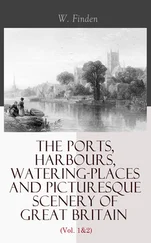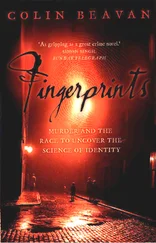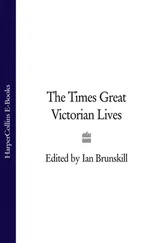The police had descriptions of two foreigners who had been in the area that day, one short and dark, the other taller and fairer; they had been seen in a pub, in fields near the rectory and in a Reigate shop, where they had bought the same kind of cord as that found at the murder scene. The descriptions of the taller of the two matched the details on the identification papers. A PS200 reward was offered for the capture of the pair, presumed to be Krohn and Franz.
Whicher sent Detective-Sergeant Robinson to interview Mademoiselle Therese Tietjens, the celebrated opera singer whose letter had been found in the rectory, at her house in St John's Wood, near Paddington. She said that a young, tallish German with light-brown hair had turned up on her doorstep a week earlier, pleading poverty and asking for her help in returning to Hamburg. She had promised to pay his expenses, and had given him a letter to this effect. Whicher asked Dolly Williamson to check the sailings to Hamburg and to make enquiries at the Austrian, Prussian and Hanseatic embassies and consulates.
Extra constables were sent to the sugar-baking district of Whitechapel, in the East End, where many itinerant Germans took lodgings. Several German tramps were taken in for questioning. One by one, Whicher ruled them out. 'Altho' he somewhat answers the description of one of the men concerned in the murder of Mrs Halliday,' he reported of a suspect on 18 June, 'I do not think he is one of them.'
The next week, though, Whicher told Mayne he had found Johann Franz: a twenty-four-year-old German vagrant picked up in Whitechapel who claimed his name was Auguste Salzmann. At first, Whicher could find no eyewitnesses to confirm that this was one of the Kingswood Germans. On the contrary: 'He has been seen by three persons from Reigate and Kingswood who saw two foreigners in the neighbourhood the day before and on the day of the murder, but they are unable to identify him as one of them,' Whicher wrote to Mayne on 25 June. 'He has also been seen by PC Peck, P Division, who met the two men at Sutton on the morning of the murder, but he cannot recognise him. Altho' these persons have failed to identify him, I have no doubt but he is "Johann Carl Franz" the owner of the book left behind, and as there are other persons who saw the two foreigners in the neighbourhood, I beg to suggest that Serjeant Robinson should fetch them to London to see the prisoner.' Whicher's self-assurance - or his fixation - paid off. On 26 June witnesses from the pub and the string shop in Reigate agreed that this was the taller and fairer of the two Germans who had visited the town. Whicher declared himself 'thoroughly confident' of securing a conviction.
He sent photographs of the identification papers to officials in Saxony, who confirmed their authenticity, adding that their owner had a prison record. Whicher also discovered that two days after the murder the suspect had given his landlord a blue checked shirt for safekeeping. The shirt exactly matched the description of that worn by one of the men seen at Kingswood, and wrapped around it was a piece of cord just like that which had bound the murder victim's body. The detectives traced the maker of the cord, who confirmed that he had spun the string which was found round the shirt and round Mrs Halliday's ankles: 'They are all off the same ball. I am quite sure of it.' More eyewitnesses agreed that they had seen the prisoner in Surrey. Even PC Peck said he now believed the suspect was one of the men he met at Sutton. Whicher had put together a strong chain of circumstantial evidence. On 8 July the prisoner admitted he was Franz. He was committed for trial.
The story the German gave in his defence sounded trumped-up from beginning to end. After disembarking from a steamer at Hull in April, he said, he had fallen in with two other German vagrants, Wilhelm Gerstenberg and Adolphe Krohn. Gerstenberg, who in build and colouring resembled Franz, pestered him to hand over some of his identification papers. Franz refused. One night in May, while Franz was asleep behind a haystack near Leeds, his two companions robbed him, taking not only the papers but also his pack and his spare clothes, which were cut from the same cloth as those he was wearing. This explained the similarity between his shirt and that seen near Kingswood, while his resemblance to Gerstenberg explained why some of the eyewitnesses thought they had seen Franz in Surrey. The destitute Franz made his way to London alone. When he reached the city he heard that a German called Franz was wanted for murder, so he quickly adopted a new name. As for the cord in his room, he said he had found it on the pavement outside a tobacconist's shop near his lodgings. His defence, then, was that he had been robbed of his clothes and papers by a German tramp who looked very like him, had changed his name for fear he would be mistaken for a murderer, and had happened to pick up a piece of cord on a London street that exactly matched the distinctive twine at the murder scene.
All this seemed the invention of a desperate and guilty man. But in the days leading up to the trial various facts emerged that seemed to corroborate Franz's account. A vagrant in Northamptonshire presented the police with some stray papers from the packet that Franz claimed had been stolen from him - he said he had found them on a heap of straw in a roadside hovel. This suggested that at least some of Franz's papers had gone astray, as he claimed. When Mademoiselle Tietjens came to see the prisoner she swore that he was not the light-haired man who had asked for her help in early June. This raised the possibility that there was indeed another light-haired German who had been associated with the darker Krohn. And it came to light that the London supplier of the hemp twine sold in Reigate, and found on Mary Halliday's body, was based in Whitechapel, just a few doors away from the stretch of pavement where Franz said he picked up the piece with which he tied his shirt.
The inquiry was slipping away from Whicher. He searched desperately for Krohn, whose capture he was convinced would make the case against Franz. He was so keen to find the missing German that he more than once expressed a conviction that he almost had him: 'I have little doubt but that the man described as Adolphe Krohn is a young Polish Jew named Marks Cohen,' he wrote to Mayne. He was proved wrong. Soon afterwards he was 'strongly impressed' that another man was Krohn, and again was mistaken. Whicher did not find him.
At the trial for Mary Halliday's murder on 8 August, Franz's counsel argued, in a passionate four-hour speech, that the circumstantial evidence in the case needed not only to be consistent with guilt but also to be inconsistent with innocence. It was said that ten of the twelve jurors went into the jury room convinced that Franz was the murderer, but when they came out they declared him not guilty. The Saxon Embassy paid his fare home.
The Times the next day, clearly convinced that Franz had killed Mrs Halliday, pointed out that circumstantial evidence was always - theoretically - consistent with innocence. Such evidence was never proof of anything: 'it is only an hypothesis binding together certain facts, though it is at the same time an hypothesis which, by a law of nature, we cannot in certain cases help believing to be the right one'.
The Kingswood investigation had unfolded like a nasty joke, a mockery of a detective's skills. It was a reminder that detective work relied on good fortune as well as acuity. 'If I was not the cleverest, of which I had grave doubts, I was certainly the luckiest of detectives,' says Inspector 'F', the narrator of Waters' Experiences of a Real Detective (1862). 'I had but held my mouth open, and fat things had dropped in of their own accord.' Whicher's luck seemed to have run out. He had probably been right about the identity of the Kingswood murderer, but once Franz was acquitted the detective's confidence started to look like something else - arrogance, perhaps, or delusion, or obsession. This was the last murder he investigated.
Читать дальше












